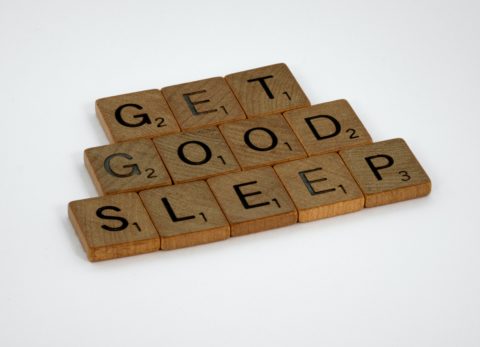Posted on September 13, 2022 by Jenn Zatopek
After years of trying and failing to sleep well, I completed a course in Cognitive Behavioral Therapy for Insomnia (CBT-I) last year, which has radically transformed how I sleep. Since September is Suicide Awareness Month here in the states, I wanted to share my knowledge of CBT-I with you so you can sleep well too.
While poor sleep does not cause anyone to kill themselves, insomnia creates the conditions for anxiety and depression to arise, which left untreated turns fatal. Insomnia is a miserable experience, one that makes going to work or school, parenting your kids, or trying to get along with others that much harder and exhausting.
You don’t have to keep getting a bad night’s sleep and call it a win. CBT-I has been proven to be as effective as sleep medication without all the lingering side effects. It’s a science-based approach which helps you learn more about how sleep works and implement small practices will lead to better sleep in about 6-8 weeks. Some people report improved sleep after only a week. It’s just a matter of practice.
Consider the following information as sleep medicine guidelines that will help you be kind to yourself and engage in new behaviors, which will help you sleep well long term. As a species, we are wired for chronic insomnia because our fear response has kept humans alive, so validate yourself that it’s okay to experience insomnia throughout the lifetime. This is not a moral failing but simply your body’s survival response trying to keep you alive, and an opportunity to learn how to take good care of yourself in spite of stressors.
Our circadian rhythms form a sleep architecture pattern based on what we do throughout the day, but they are mediated by our genetic makeup and environmental factors like how we were raised as kids and what’s happening in our lives now. The wonderful news is that you can train your body and brain to sleep at nighttime with minimal side effects (other than daytime drowsiness) that involve getting up at the same time everyday, avoiding long naps, and challenging negative thoughts about sleep, among other things.
Today we’ll explore some sleep hygiene tips for healthy sleep. Sleep hygiene is about creating the conditions for sleep to arise, so remember to practice these as diligently yet imperfectly as you can. You can’t make yourself sleep. You can only create the causes and conditions for sleep to develop and ride the wave of sleepiness when it hits you.
1. Regulate your circadian rhythms by going to bed and getting up at the same time each day. Our body clocks can reset if we stick to a regular schedule and go to bed and get up at the same time everyday, even on weekends. This is a hard discipline to stick with, but I can assure you that my sleep usually rights itself again after a week of making sure I get up everyday around the same time.
2. Take a break from technology two hours prior to bedtime. Being hooked up to our devices is engaging, but our brains need time to disconnect from technology before bed. In fact, research suggests that the blue light from our phones and tablets activates the prefrontal cortex of the brain (in our foreheads), which only increases our risk of insomnia. Practice detaching from technology as an act of resistance to our culture of frenetic productivity and rest instead.
3. Avoid using your bed for anything other than sleep or sex. Don’t watch TV or check social media or read the news or have in-depth emotional discussions with your family in bed. Associate the bed with sleep and relaxation rather than training your brain to keep working and thinking.
3. Make a quiet space in your house to go to and listen to a guided meditation when you awaken in the middle of the night. If I can’t sleep after 30 minutes, I have left the bedroom and listened to a guided meditation in the living room with the lights off so I can stay as relaxed as possible. Body scan meditations ask you to notice your different parts of the body and soften around any discomfort, which helps you relax enough to catch the wave of sleep. Try Insight Timer and look for body scan meditations by my favorite teachers like Dr. Christianne Wolf and Kristin Neff and Jon Kabat-Zinn.
4. Practice staying in your bed and reciting the ABCs of gratitude in your mind. This practice helps you let go of worries by distracting yourself with things to be grateful for instead. Think of all the words that begin with the letter “A” you are grateful for, repeat the words internally, and your mind will send forth images of the words. Then move on to the next one and practice until you fall asleep. Practicing gratitude helps to relax the body and brain enough that sleep can naturally arise.
5. Resist the worry thoughts that arise about not sleeping. This practice is a challenging one especially if you have had trouble sleeping for awhile because these thoughts are usually worst-case scenarios about what might happen if you continue to sleep poorly. Remind yourself that not sleeping is not a moral failing but simply a way of your body trying to help you stay safe. You can tell yourself “Thank you, not know” when the worry thoughts arise, practice belly breathing, and count backwards from 29 to 0 to distract yourself from the worry thoughts and fall asleep.
Stay with me for my next blog post where I’ll share with you more about healthy sleep rhythms and ways to relax your body and mind. And if you decide to try counseling for targeted support, schedule your free initial phone consultation with me so I can help you get a goodnight’s sleep.
(Photo by Maria Freyenbacher on Unsplash)





No Comments